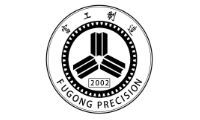Carbide rollers are widely used in rolling, extrusion and other processes in industrial production, and their fatigue resistance is directly related to the stability and production efficiency of the equipment. The microstructure of cemented carbide is one of the key factors that determine its fatigue resistance. The microstructure of carbide rollers is mainly composed of hard phase and bonding phase. The hard phase is usually a carbide with high hardness and high melting point, such as tungsten carbide (WC), titanium carbide (TiC), etc. They are the main phases that provide high hardness and wear resistance for cemented carbide. The bonding phase is generally metal cobalt (Co), nickel (Ni), etc., and its function is to bond the hard phase particles together to give the alloy a certain toughness and strength. At the microscopic scale, the hard phase particles are evenly distributed in the bonding phase to form a complex multiphase structure.
The type, size and distribution of the hard phase have an important influence on the fatigue resistance of carbide rollers. Different hard phases have different hardness and elastic modulus. For example, the hardness of WC is higher than that of TiC. When subjected to the same load, WC with higher hardness can better resist deformation and reduce fatigue damage caused by plastic deformation. In addition, the size of hard phase particles is also crucial. Smaller hard phase particles can increase the grain boundary area. Grain boundaries are obstacles to dislocation movement and can hinder the initiation and expansion of fatigue cracks, thereby improving the fatigue resistance of the alloy. When the hard phase particles are evenly distributed, stress can be evenly transmitted in the alloy, avoiding local stress concentration and reducing the probability of fatigue crack formation.
The bonding phase also plays a key role in the fatigue resistance of carbide rollers. The content and properties of the bonding phase directly affect the toughness and overall mechanical properties of the alloy. An appropriate amount of bonding phase can form a good connection between the hard phase particles, so that the alloy can effectively transfer stress when subjected to external force, and avoid premature detachment or cracking of the hard phase particles. For example, as a commonly used bonding phase, cobalt, too high or too low in content, will have an adverse effect on the fatigue resistance of the alloy. If the content is too high, the hardness and strength of the alloy will be reduced, and the roller will be prone to plastic deformation under cyclic load; if the content is too low, the bonding force between the hard phase particles will be insufficient, and cracks will easily appear and expand, thereby reducing the fatigue resistance.
Defects in the microstructure, such as pores and impurities, will significantly reduce the fatigue resistance of carbide rollers. Pores are equivalent to stress concentration sources in the material. Under cyclic loads, higher local stress will be generated around the pores, accelerating the initiation and expansion of fatigue cracks. The presence of impurities will destroy the uniformity of the alloy microstructure, make the stress distribution uneven, and easily induce fatigue cracks. Therefore, in the preparation process of cemented carbide, it is necessary to strictly control the process parameters and reduce the content of pores and impurities to improve the fatigue resistance of the alloy.
The orientation of the grains in cemented carbide will also affect its fatigue resistance. In polycrystalline cemented carbide, the orientation of the grains is randomly distributed. When the roller is subjected to external force, grains with different orientations will produce different degrees of deformation and stress concentration. If there are certain grain aggregates with specific orientations, they are more likely to slip and dislocation pile up under cyclic loads, thus promoting the formation of fatigue cracks. By controlling the preparation process, the orientation distribution of the grains can be adjusted to a certain extent, so that the fatigue resistance of the alloy can be optimized.
The microstructure of carbide rollers has a comprehensive influence on its fatigue resistance through hard phase, bonding phase, microstructure defects and grain orientation. In actual production, in-depth understanding of these influence mechanisms and regulating the microstructure by optimizing the preparation process are the key to improving the fatigue resistance of carbide rollers and extending their service life.

